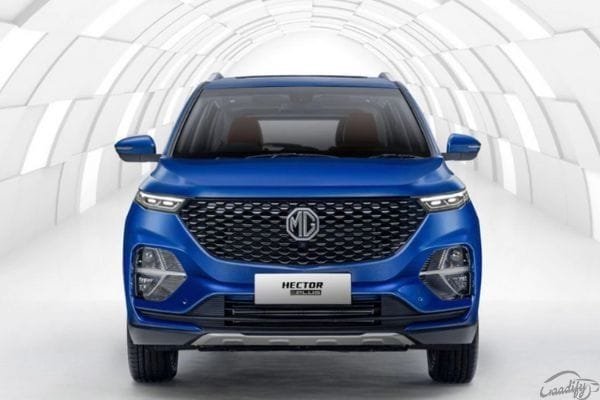Latest Update: Hyundai has launched the third-generation i20 in India at a starting price of Rs 6.8 lakh (ex-showroom). Click here to know more about this new hatch.
The third-generation Hyundai i20 is all set to hit the Indian roads on 5th November 2020. But before the launch, its ARAI mileage figures have been leaked, which are as follows: –

|
2020 Hyundai i20 Mileage |
|
|
Powertrain |
ARAI Mileage |
|
1.2-litre petrol with manual gearbox |
21kmpl |
|
1.2-litre petrol with CVT automatic |
19.65kmpl |
|
1.0-litre turbo-petrol with iMT |
20kmpl |
|
1.0-litre turbo-petrol with DCT automatic |
20.28kmpl |
|
1.5-litre diesel with manual gearbox |
25kmpl |
Takeaways: –
- The new i20 shares its engine options with the Venue sub-4m SUV.
- As expected, i20's 1.5-litre diesel engine is the most fuel-efficient among all, followed by the 1.2-litre petrol manual and 1.0-litre petrol DCT powertrains.
- The 1.2-litre petrol CVT powertrain offers the least mileage amid all.
Also Read: Hyundai Elite i20 Axed Ahead Of New i20 Launch
The fuel efficiency figures of the upcoming i20 are quite impressive, at least on papers. But will it be able to surpass the other offerings of the segment? Well, here is the answer –

1. Petrol
|
Model |
Hyundai i20 |
Maruti Suzuki Baleno/ Toyota Glanza |
Tata Altroz |
Honda Jazz |
Volkswagen Polo |
|||
|
Engine |
1.2-litre NA petrol |
1.0-litre turbo-petrol |
1.2-litre |
1.2-litre mild-hybrid |
1.2-litre |
1.2-litre |
1.0-litre NA |
1.0-litre turbo-petrol |
|
Max Power |
83PS |
120PS |
83PS |
90PS |
86PS |
90PS |
75PS |
110PS |
|
Max Torque |
114.7Nm |
172Nm |
113Nm |
113Nm |
113Nm |
110Nm |
95Nm |
175Nm |
|
Gearbox Option |
5-speed manual / CVT |
6-speed iMT / 7-speed DCT |
5-speed manual / CVT |
5-speed manual |
5-speed manual |
5-speed manual / CVT |
5-speed manual |
6-speed manual / 6-speed AT |
|
ARAI or Claimed Mileage |
21kmpl / 19.65kmpl |
20kmpl / 20.28kmpl |
21.01kmpl / 19.56kmpl |
23.87kmpl |
19.05kmpl |
16.6kmpl / 17.1kmpl |
17.75kmpl |
18.24kmpl / 16.47kmpl |
- The new i20 and Volkswagen Polo are available with two petrol engine options whereas all the other cars of the segment get only a single petrol engine choice. However, Maruti Baleno & Toyota Glanza also offer a mild-hybrid system with the petrol engine, which really helps to pushes its fuel-efficiency.
- For people not in the know, the Toyota Glanza is a rebadged version of Maruti Suzuki Nexa Baleno. Hence, they share everything except for the brand's badge.
- i20's 1.2-litre naturally-aspirated petrol engine with the manual gearbox is the third most frugal combination in the table after the Baleno/Glanza's manual powertrains.
- The ARAI certified mileage, as well as the engine output of i20's 1.2-litre petrol-manual powertrain, quite pars with Baleno/Glanza's 1.2-litre manual.
- In i20's lineup, its CVT powertrain is the least frugal choice, but it is still more economical than all the automatic variants of other cars.
- As far as the fuel efficiency of turbocharged engines is concerned, the i20 beats Volkswagen Polo with a huge margin. In fact, Polo's 1.0-litre turbo-petrol engine offers the least mileage among all.
- It is important to note that the i20 is the only car in the segment which offers clutchless manual (iMT) and dual-clutch automatic (DCT) transmission options.
Also Read: New Hyundai i20: Here Are The Variant-wise Colors And Engine Availability Details
2. Diesel

In the premium hatchback segment, Tata Altroz and new i20 are the only models that offer diesel motor. Here are their specifications: –
|
Model |
New Hyundai i20 |
Tata Altroz |
|
Engine |
1.5-litre |
1.5-litre |
|
Max Power |
100PS |
90PS |
|
Max Torque |
240Nm |
200Nm |
|
Gearbox Option |
6-speed manual |
5-speed manual |
| ARAI or Claimed Mileage |
25kmpl |
25.11kmpl |
- The displacement of diesel engines of both cars is the same and both mills are only available with a manual gearbox. However, the Altorz's gear ratios are different than i20's as it comes with a 5-speed unit whereas the Korean offering gets a 6-speed assembly.
- The i20 here has a better engine performance, but this results in a decrease in fuel efficiency (0.11 kmpl less than Altroz). However, this difference is quite marginal.








